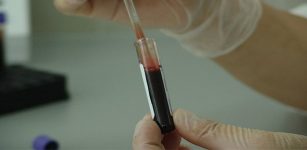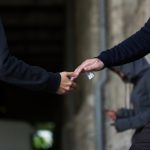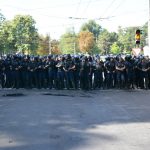DNA Falsely Connecting People to Crimes

DNA is often thought of as a ‘magic bullet’ – having the ‘final say’ as far as the facts are concerned, but this isn’t always the case.
In fact, the improper use of DNA evidence is fraught with danger – potentially linking people to crime scenes they’ve never attended, or weapons they’ve never touched.
Secondary DNA Transfer
Imagine that the last time you shook hands with someone, or gave them a hug, or shared a drink, you inadvertently connected yourself to a crime. This can occur through something known as ‘secondary DNA transfer’.
Small amounts of DNA can easily be passed on to a second or even third person or object. For instance, you may pass a sample of your DNA onto someone else through sweat, and that person may then pass your DNA onto another person or item. This ‘secondary DNA transfer’ can be one of the reasons that criminal lawyers often receive ‘expert DNA certificates’ that list several potential sources of DNA on a single exhibit.
And new, ultra-sensitive DNA analysis techniques can detect even the most miniscule of samples – potentially making it seem like a person was present at a crime scene, or handled an object, when they never did.
A ‘suspect’ who then denies attending the scene or touching the object may seem like they are lying to cover up their guilt; something which can be extremely dangerous before a jury who think that DNA represents irrefutable proof of a person’s presence.
US Study
In a recent study by the University of Indianapolis, participants shook hands before handling test knives.
In a whopping 85% of cases, the DNA of the person who did not touch the the knife showed up anyway.
Of particular concern was that in one-fifth of cases, these ‘secondary’ DNA profiles showed up as the main or only contributor!
The study was inspired by the University’s finding that DNA profiles of employees’ children were routinely found during laboratory contamination checks, even though the kids never attended the lab.
Further testing is now underway to determine how long and in what way people must touch one another for an effective transfer, and the length of time that the secondary DNA will remain in different situations on humans and various objects.
Previous Research
Studies carried out in the late 1990s and early 2000s also looked at secondary DNA transfer.
In fact, a similar study was conducted in 1999; at a time when DNA profiling technology was not as advanced as it is now. Applying the now-outdated techniques, that study concluded:
“secondary transfer was not observed under our experimental conditions. Therefore, our data do not support the inference that the interpretation of DNA profiles from case sample could be compromised by secondary transfer.”
But DNA technology has advanced in leaps and bounds over the past 15 years, and there is a strong argument that the results of the 1999 study would have been different if modern techniques had been applied.
Implications
One of the heads of the Indianapolis study, leading DNA analyst Cynthia Cale, has served as an expert witness in many court cases involving DNA evidence.
Her views about the evidentiary value of DNA evidence are very different to the infallible way in which DNA is presented in the movies. Ms Cale acknowledges that:
“when you go into court be prepared to answer questions about how DNA is transferred because a lot of times we don’t know how the DNA got there, when it got there, under what circumstances.”
She believes that great care should be exercised when giving expert opinions in court, and when otherwise dealing with DNA evidence. Instead of simply jumping to conclusions, the very real possibility of secondary DNA transfer should be taken into account by forensic experts, police, prosecutors, defence lawyers and by the way the law itself treats such evidence.
Cale says:
“It’s scary. Analysts need to be aware that this can happen and they need to be able to go into court and effectively present this evidence. They need to school the jury and the judge that there are other explanations for this DNA to be there.”
Latham, another scientist on the project, states:
“DNA never lies, right? But sometimes the only evidence they have in a case is DNA, and this emphasizes that we need to interpret the entirety of a case… Even everyday people on a jury need to understand that DNA is not this magic bullet, that it needs to be interpreted just like any piece of evidence.”
Given the great weight juries may attach to DNA evidence, it is certainly not hard to imagine how secondary DNA transfer can lead to innocent people being wrongly convicted.
Receive all of our articles weekly
Author






